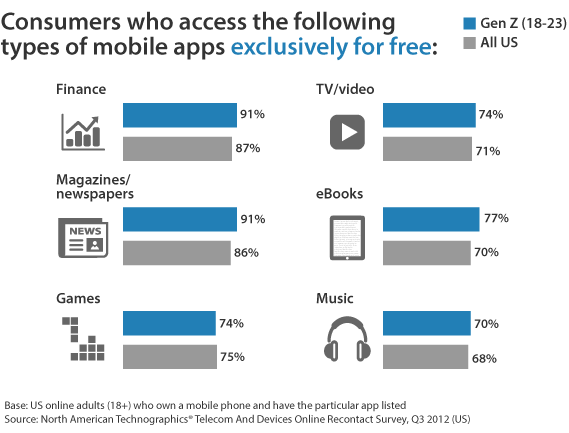The Data Digest: The Best Things In Life Are Free (Apps)
I recently completed James L. McQuivey's Digital Disruption, which is well worth the read if you have not yet gotten your hands on a copy. The book analyzes factors that allow for the emergence of digital disruptors — individuals who are pushing the envelope of product efficiency by harnessing available digital capabilities. In the book, James mentions that most digital disruptors are under age 35 because these individuals were “the first to grow up in a consumer economy where free things were not simply promotional tools . . . [they] internalized the idea of free from the consumer side, which led to the kinds of rapid digital adoption curves that run through the body of digital disruption like arterial supply lines.”
This is an intriguing point because it hints at young consumers’ evolving expectations of free tools and content. For the upcoming generation, the capacity for digital productivity and entertainment free of charge is less of a privilege and more of a norm. Today, consumers can get what they want quickly and cheaply; therefore, they expect that their needs will be met faster and more frequently than ever before.
This idea is particularly relevant when it comes to mobile interaction. The overwhelming majority of consumers say they only access mobile application content for free. Analysis of Forrester’s Consumer Technographics® data reflects this sentiment: While some consumers state they may pay a one-time download fee for gaming or music apps, most would exclusively choose free media:

My colleague Thomas Husson recently wrote about the tension between consumers’ expectation of the digital world to yield entertainment and utility experiences for free and the challenge for mobile businesses of sustaining profit. He notes that the “freemium” approach “is generating a lot of buzz . . . [as] this concept is now spreading to newspapers, dating services, premium social networks, navigation services, and photo and video apps.” However, only those brands that can serve consumers' situations, preferences, and attitudes in real time on mobile devices will be able to leapfrog the competition and, more importantly, provide their services at a cost.